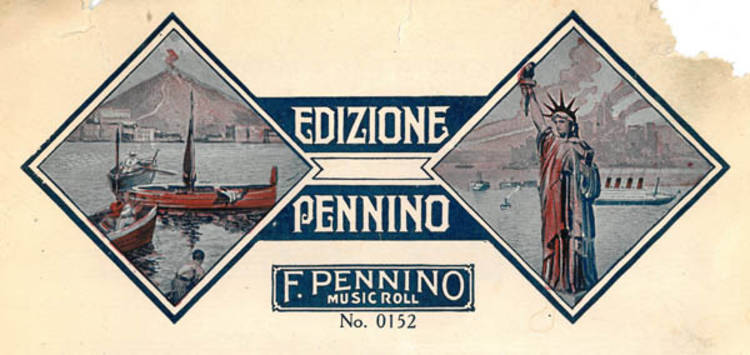The canzone napoletana (Neapolitan song) has been one of the first international popular musics of the modern era, traveling beyond the city of Naples and the borders of Italy. Its success was due largely to Italian emigrants who composed, performed, recorded, sold, and consumed the music in the forms of sheet music, piano rolls, 78 rpm recordings, and performances. In New York, Buenos Aires, Rio de Janeiro, Montreal, Sydney, and other points, the Neapolitan song has come to define the cultural expression of Italian migrant life.

The Neapolitan song was at the heart of the vibrant cultural life of New York’s Italian-American community during the first half of the twentieth century. Performers like Gennaro Amato,
Eduardo “Farfariello” Migliaccio [2],
Gilda Mignonette [3], and Clara Stella were renowned, international stars who lived in city neighborhoods among the fans who purchased their recordings and attended their concerts. These artists performed macchiette (songs with spoken monologue) and sceneggiate (song-driven skits) at the Brooklyn Academy of Music, the Guild Lyric Theatre, the Thalia Theater, and at other popular venues.
New York-based composers
Salvatore Cardillo [4] and Giuseppe De Luca, and lyricists like Vincenzo Gallo, Salvatore Baratta, and others, produced countless songs that were performed and enjoyed all over the world. Staples of the Neapolitan canon like “Core ‘ngrato” (1911), “Senza Mamma” (1925), and “A cartulina ‘e Napule” (1927) were composed and first performed in New York City.
Driving much of this music were the publishing houses that specialized in Neapolitan and Italian music. The
Italian Book Company [5], Edizione E. Rossi, and Edizione Pennino published music composed in the States and entered in partnership with their Italian counterparts to distribute material copyrighted in Italy in this country. Many of these publishers introduced new songs at the annual Piedigrotta Music Festival in Naples.
So much of the history of Neapolitan music-making in the United States has been lost. No American institution or collecting archives is dedicated to this rich cultural legacy. The neglect is a tragedy. This history will be effectively silenced without the acknowledgement of the music’s value and the professional care of the remaining artifacts.

On Match 20th and March 21st, the John D. Calandra Italian American Institute and the
International Centre for Music Studies, Newcastle University [6] in the United Kingdom, in collaboration with the
Archivio Sonoro della Canzone Napoletana [7], RAI in Italy, sponsor “
Neapolitan Postcards: Canzone Napoletana as Transnational Subject [8].” This two-day conference features fifteen scholars who will address the relatively unexplored transnational aspects of the Neapolitan song. In addition, venerable songstress of the Neapolitan song, Rita Berti, will discuss her long career and present a recital of Neapolitan music. The conference takes place at the
CUNY Graduate Center [9], Elebash Recital Hall, 365 Fifth Avenue, Manhattan (between 34th and 35th Streets).

In conjunction with the conference, the John D. Calandra Italian AmericanInstitute presents “
Chist’è New York: The Mark Pezzano Collection of Neapolitan Sheet Music from New York [10]” (March 19th-June 26th) in its 43rd Street gallery space. Curated by Rosangela Briscese, Mark Pezzano, and Joseph Sciorra, the exhibition is a sampling of New York City’s vibrant Neapolitan music scene during the first half of the twentieth century. It features thirty-one items— sheet music, sceneggiata scripts, and concert programs— that
connoisseur Mark Pezzano [11]has collected over the past thirty years. Farfariello, Mignonette, Pennino, and Stella are among the celebrated composers, performers, and publishers represented in the exhibit.






